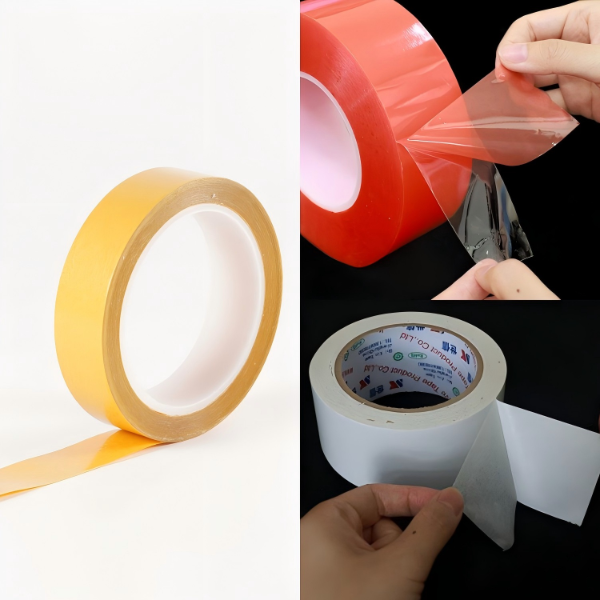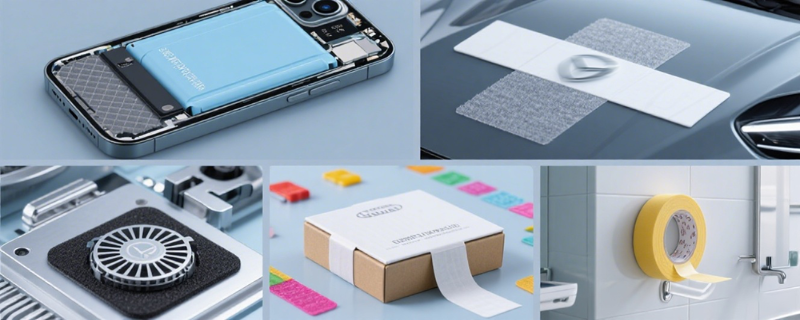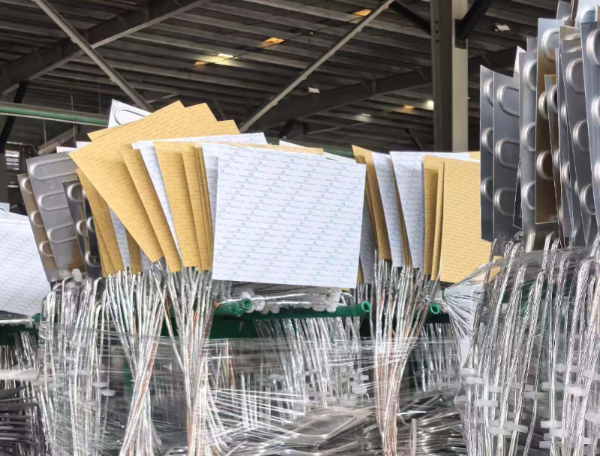On the stage of modern industrial design, thinness, efficiency, and aesthetics have become core pursuits for products. When we marvel at the seamless integrated design of smartphones, the comfortable fit of wearable devices, and the stable operation of various precision electronic equipment, we often overlook a crucial “unsung hero”—ultra-thin flexible double-sided tape. Unlike traditional bulky connectors, this tape, with its extreme thinness, excellent flexibility, and strong adhesive force, is quietly transforming the entire manufacturing industry. It is no longer just a tool for connecting objects but a core material that enables more possibilities for products and drives design innovation. Its emergence allows designers to break free from the constraints of traditional fasteners like screws and rivets, combining various components in a more aesthetic, efficient, and lightweight way, thus creating the stunning products we see today. The core value of this tape lies in its ability to make products thinner and lighter without sacrificing structural strength and reliability, while providing unprecedented flexibility for complex internal space layouts.

Common Types of Double-Sided Tapes & Substrates
|
Tape Type |
Substrate |
Key Features |
|
Transfer Tape |
No carrier |
Ultra-thin, conformable, ideal for invisible bonding |
|
PET Double-Sided Tape |
Polyester film |
High dimensional stability, good temperature resistance |
|
Non-Woven Double-Sided Tape |
Non-woven fabric |
Soft, thick, suitable for rough surfaces |
|
Foam Double-Sided Tape (EVA/NBR/PE) |
Foam |
Shock-absorbing, gap-filling, high bonding strength |
|
Acrylic Foam Tape (VHB Type) |
Acrylic foam |
High strength, weather-resistant, screw/rivet replacement |
|
Hot Melt Double-Sided Tape |
Hot melt adhesive |
Strong tack, ideal for fast positioning |
|
High-Temperature Resistant Tape |
PI, PET, etc. |
Can withstand ≥150°C, used in electronics assembly |
|
Nano Double-Sided Tape |
TPU or acrylic |
Reusable, washable, transparent, often used in home & office |
Typical Industry Applications
1. Consumer Electronics
Smartphones: Display, touchscreen, battery, camera module bonding
Tablets/Laptops: Front panel mounting, keyboard membrane assembly
Wearables: Flexible bonding with waterproof and comfort demands
Common Tapes: Ultra-thin PET, transfer tape, nano tape, foam tape
2. Automotive Industry
Emblems, trims, dashboards
Light fixtures, reverse sensors
Cable harnesses, noise insulation bonding
Common Tapes: Acrylic foam (VHB), high-temp PET, non-woven
3. Industrial & Manufacturing
Metal/plastic part positioning
Motor/heat sink assembly
Packaging & temporary fixing
Common Tapes: Foam tapes, PET tapes, hot melt tapes
4. Construction & Home Use
Mirror/picture hanging, decorative trims
Carpet installation, anti-collision strips
Common Tapes: Foam tapes, nano tape, removable tapes
5. Packaging & Creative DIY
Sealing envelopes, gift boxes
Arts and crafts
Common Tapes: Transfer tapes, hot melt adhesives
6. Medical & Healthcare
Skin contact applications: ECG electrodes, wearable devices
Requires skin-friendly, breathable, non-irritating adhesives
Common Tapes: Acrylic medical-grade adhesives, low-sensitivity tapes


Key Properties & Buyer Concerns
|
Property |
Description |
What Customers Ask |
|
Adhesion Strength |
Initial tack & holding force |
Will it hold securely over time? Can it be removed cleanly? |
|
Thickness |
Ranges from 0.03mm to 3mm |
Is it suitable for thin design or gap-filling? |
|
Temperature Resistance |
-20°C to 150°C or more |
Can it withstand heat without failure? |
|
Removability |
Clean peel, no residue |
Suitable for temporary setups or displays? |
|
Flexibility |
Conforms to curved/uneven surfaces |
Will it fit wearables or irregular parts? |
|
Waterproofing |
Sealing and barrier performance |
Can it keep out moisture/dust in wearables or outdoor gear? |
|
Eco-Friendliness |
Low VOCs, ROHS-compliant |
Is it safe for export to Europe/USA? |
Common Pain Points & Solutions
|
Pain Point |
Suggested Solution |
|
Limited internal space in electronics |
Use ultra-thin PET or transfer tape |
|
Needs to withstand heat and sun |
Use acrylic foam or high-temp PET tape |
|
Rough/uneven surface |
Use foam tape for conformability |
|
Risk of residue after removal |
Use removable or low-residue adhesives |
|
Need for repositioning/reuse |
Use nano tape or low-tack removable tape |
In today’s world, technology is advancing by leaps and bounds, and new materials and applications are emerging one after another. As a universal bonding solution, the potential of ultra-thin flexible double-sided tape has not been fully explored. In the future biomedical field, it may be used to fix sensors of wearable medical devices, with its skin-friendly, breathable, and removable properties being the key; in the manufacturing of bendable screens and flexible circuits, it will become the core material for connecting and fixing flexible components, promoting the further development of innovative products such as foldable phones and flexible displays; in the field of new energy vehicles, it will be used for the insulation and fixing of battery packs, and its high-temperature resistance and strong adhesive force will provide guarantees for the safety and stability of battery systems. With the progress of nanotechnology and polymer chemistry, future ultra-thin flexible double-sided tape will have more unimaginable functions, such as self-healing, conductivity, and thermal conductivity. The integration of these properties will make it play a more important role in future intelligent manufacturing, the Internet of Things, aerospace, and other fields. It can be said that this little tape is quietly shaping a thinner, smarter, and more interconnected future world with its silent power.